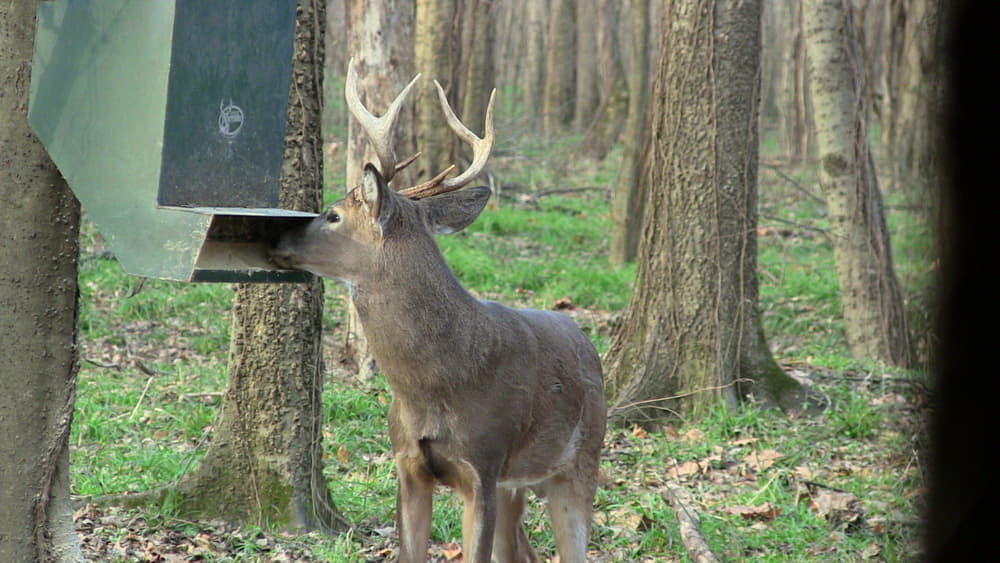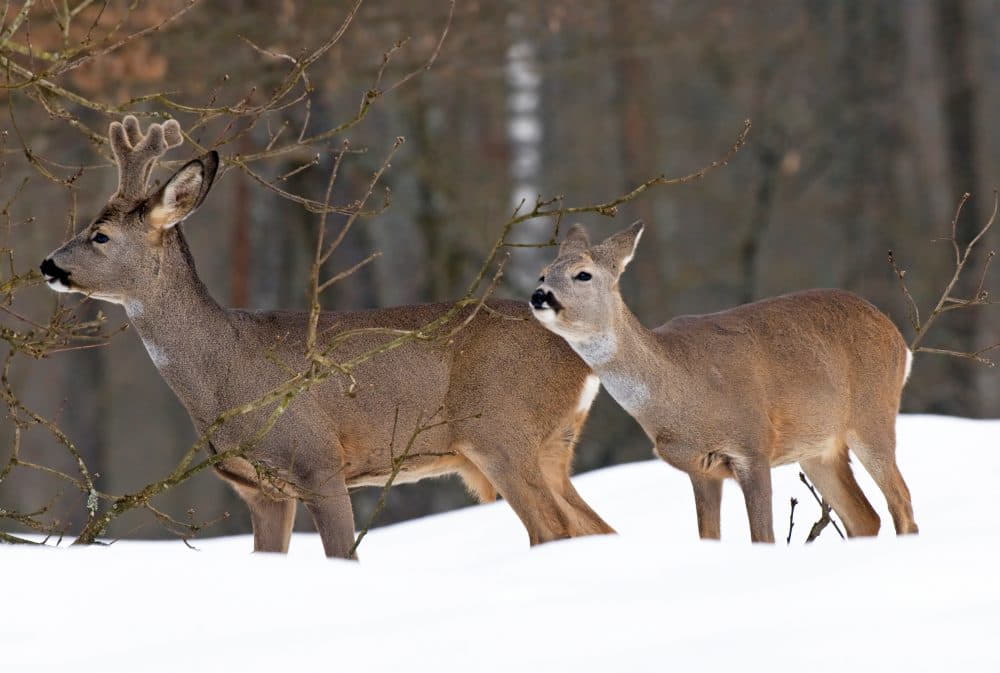Deer hunting requires careful planning and strategy. One essential element in attracting deer to specific areas is setting up a deer feeder. However, achieving optimal results depends on understanding the best time to set deer feeder.
The optimal time to set up a deer feeder is mainly determined by your personal aims and local hunting rules. There are, nevertheless, a few general standards to follow. It’s also worth mentioning that deer feeding habits might change based on location and weather.
In this comprehensive guide, we will delve into the factors that influence deer feeding patterns, explore the significance of timing. Furthermore, providing useful insights to assist you maximize your chances of success. Whether you’re a seasoned hunter or a beginner, this article will equip you with the necessary knowledge. Make the most of this knowledge for your hunting endeavors.
Table of Contents
Understanding Deer Feeding Patterns
Understanding deer eating patterns is essential for determining the optimal time to put a deer feeder. Deer are nocturnal animals. This means they are most active at twilight, primarily around dawn and dusk. These periods offer favorable conditions as the ambient light levels allow them to move around and feed. It also reduces their exposure to potential predators.
Deer are more vigilant and cautious during the twilight hours, making it simpler for them to identify any potential risks. Additionally, cooler temperatures during these times provide relief from the heat. It encourages deer to participate in feeding behaviors.
When Is The Best Time To Set Deer Feeder?
Weather, temperature, barometric pressure, and moon phases all have an effect on deer feeding periods. Today, let’s take a closer look at the most important feeding times for deer.

Dawn: Capitalizing on the Early Morning Advantage
Early morning is regarded as one of the best times to place a deer feeder. Deer emerge from their bedding areas as the sun rises in quest of food. Let’s put your feeder in places close to where they sleep. Because you can capitalize on their morning movements and entice them to visit your desired hunting spot.
Because of residual nocturnal predatory dangers, deer may demonstrate greater wariness during the early hours. As a result, using stealth and reducing human presence becomes even more important. It contributes to a successful hunting experience.
Dusk: Harnessing the Power of Twilight
Dusk, like dawn, is an excellent time for setting up deer feeders. Deer become more active in their search for food as daylight fades and darkness approaches. You can take advantage of their natural instincts by placing your feeder near established feeding areas. As a result, it may increase your chances of luring deer within range.
Deer may experience more comfort during this period as they anticipate the coming night and decreased predator activity. This increased sense of security can work to your advantage, allowing you to observe and hunt deer with greater ease. Nonetheless, you must approach your hunting spot with discretion. This will help to avoid spooking these keen-sensed creatures.
Seasonality’s Effect on Deer Feeding Behavior
Seasonal changes affect environmental conditions and food availability. This eventually influences when and where deer will feed.
Spring
During this period, natural food sources such as fresh buds, grasses, and new plant growth become more abundant. Consequently, the reliance on supplemental feeders diminishes as deer have access to an assortment of fresh vegetation.
While setting up feeders may not be as effective during spring, it can still serve as a valuable attractant for deer. By properly placing them near bedding places, you can entice deer to visit your hunting spot. Particularly in the early morning and late nighttime hours, when natural food sources may be limited.
Summer
As temperatures rise, deer often seek shelter and conserve energy during the hottest parts of the day. As a result, they are more active in the colder early morning and late evening hours. Set up feeders near water sources or dense vegetation to increase your chances of attracting deer during the summer.
Fall
The fall season is typically regarded as the best time for deer hunting. Setting up deer feeders during this time period can greatly increase your chances of success. Placing feeders strategically along well-traveled paths or near doe bedding areas. This can boost your chances of attracting bucks and maximizing your hunting opportunities.
Winter
Winter poses unique challenges for deer survival. Natural food sources become scarce. When setting up feeders in winter, it’s essential to consider their placement carefully.
Look for areas with good visibility. Ideally, deer can find shelter from harsh weather beneath cover or dense foliage. Furthermore, you should place feeders near established deer trails or bedding sites. This raises the likelihood of attracting hungry deer.
Factors Influencing Feeding Times
It’s important to remember that deer behavior can be influenced by various factors. Let’s explore some key elements that can impact the best time to set a deer feeder:
Weather Conditions
Weather plays a significant role in determining deer feeding activity. During extremely hot or cold conditions, deer may adjust their feeding times to avoid discomfort. Before arranging your hunting trips, keep an eye on the weather forecast. Then, altering the timing of your deer feeder setup accordingly.

Hunting Pressure
Areas with high hunting pressure may cause deer to alter their feeding habits and become more nocturnal or elusive. Consider scouting your hunting area thoroughly. Then, gathering information about hunting pressure to determine the optimal timing for setting up a deer feeder.
Moon Phase
Some hunters believe that deer tend to feed more actively and become more visible during specific moon phases. It’s worth considering moonrise and moonset times when deciding on the best time to set a deer feeder.
Vegetation Availability
Understanding local vegetation patterns and monitoring food availability are critical. This might assist you in determining when to set up deer feeders for the best outcomes.
Deer Feeder Tips and Tricks
Here are a few tips we recommend to make your feeding more efficient:
- Keep an eye on your feed type: You can boost your chances of attracting deer by feeding them the proper foods at the right times. It is an energy-dense meal, similar to corn, that can keep deer warm in the cold. Deer enjoy the following foods: corn, rice, bran, nuts, soybeans, apples, etc.
- Mineral attractants can be placed nearby and set multi-feed sites: The smell and flavor of mineral-rich diets attract deer. It can help to attract deer and improve your chances of a successful hunt. It is simple to run many feeders on a single property. If you set a feeder every 50 to 100 acres, it will be easier to attract deer to your land.
- Let the deer feeder work over time: In the first several weeks, get the deer used to the feeder. If you spread feed across the place, they will return on a regular basis.
- Learn more with a trail camera: An outdoor trail camera can assist you in learning about deer behavior and movements in their natural habitat. You can identify the deer once you know when they arrive at the feeder.
- Deer Feeders should spin for over five seconds: Consider reducing the interval between feeding and dispensing. The ideal time is five seconds. You can progressively raise this as the deer become acclimated to it and begin to feed more frequently.
Conclusion
Remember, dawn and dusk are often the best time to set deer feeder. Because these correspond to the natural activity peaks of deer. Also, keep an eye out for seasonal changes and adjust your feeder placement accordingly. This will improve your hunting experience even more.

